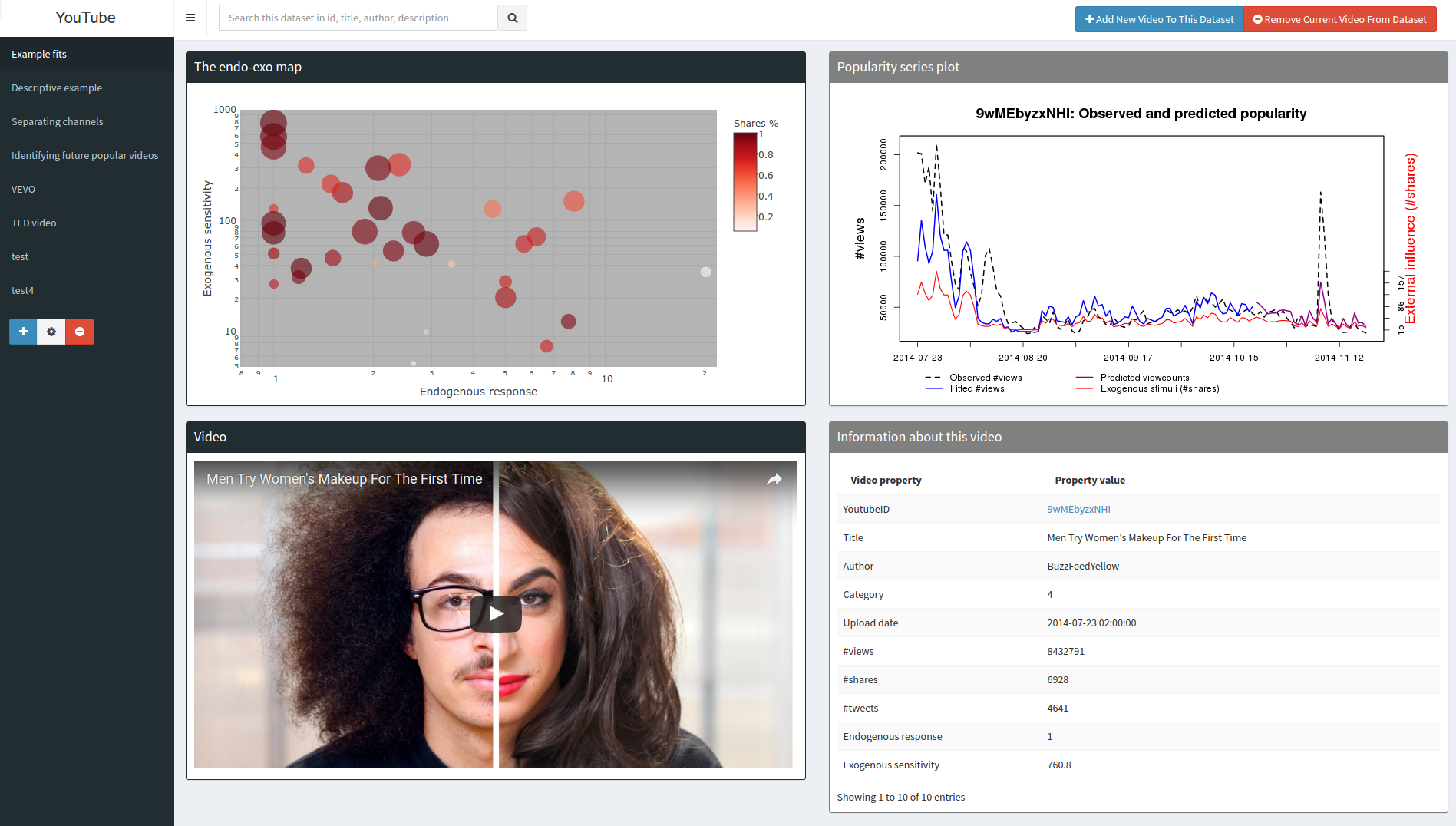Expecting to be HIP: Hawkes Intensity Processes for Social Media Popularity
Modeling and predicting the popularity of online content is a significant problem for the practice of information dissemination, advertising, and consumption. Recent work analyzing massive datasets advances our understanding of popularity, but one major gap remains: To precisely quantify the relationship between the popularity of an online item and the external promotions it receives. This work supplies the missing link between exogenous inputs from public social media platforms, such as Twitter, and endogenous responses within the content platform, such as YouTube. We develop a novel mathematical model, the Hawkes intensity process, which can explain the complex popularity history of each video according to its type of content, network of diffusion, and sensitivity to promotion. Our model supplies a prototypical description of videos, called an endo-exo map. This map explains popularity as the result of an extrinsic factor - the amount of promotions from the outside world that the video receives, acting upon two intrinsic factors - sensitivity to promotion, and inherent virality. We use this model to forecast future popularity given promotions on a large 5-months feed of the most-tweeted videos, and found it to lower the average error by 28.6% from approaches based on popularity history. Finally, we can identify videos that have a high potential to become viral, as well as those for which promotions will have hardly any effect.
PDF Abstract